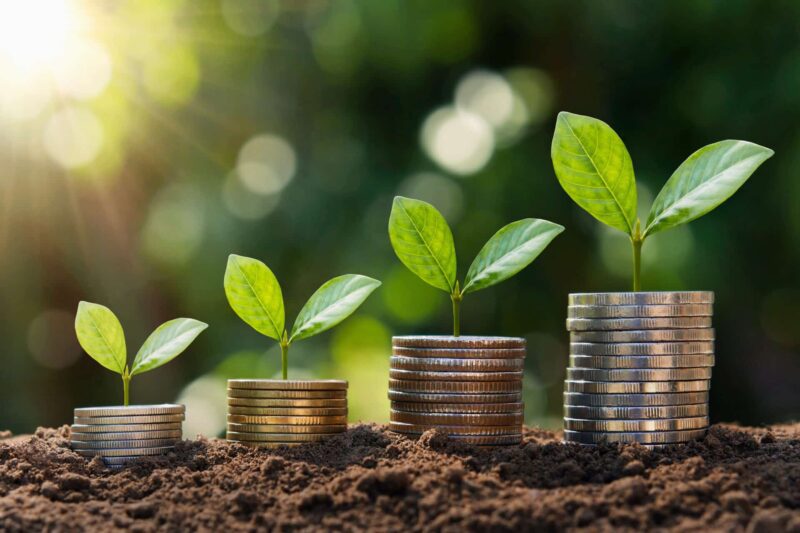Green financing is becoming increasingly central in the Moroccan financial landscape. Since COP 22 in 2016, the country has structured its climate finance ambitions through a **Climate Finance Development Strategy by 2030**, mobilizing various institutional actors such as Bank Al-Maghrib, the Casablanca Stock Exchange, and the Moroccan Capital Market Authority (AMMC).
Initially driven by international financial institutions (IFIs), green financing in Morocco has materialized through several specific credit lines:
– **MorSEFF**, initiated by the EBRD, AFD, and KfW, to finance energy efficiency and renewable energies.
– **SME Green Value Chain (GVC)**, in partnership with the Green Climate Fund and South Korea, focused on green value chains.
– **Green Invest / TAMWIL Invest**, funded by the EBRD and EIB, covering all productive sectors except real estate and deep-sea fishing.
– **ISTIDAMA**, aimed at agriculture and agro-industry, funded by AFD and Crédit Agricole du Maroc.
– **Green Economy Financing Facility (GEFF)**, supported by the EU and the Green Climate Fund.
Today, the Moroccan financial sector is tending to develop its own green products, reflecting a **growing maturity of the national market**.
**Various instruments to support the green transition**
Morocco has a wide range of green financing instruments, ranging from **public subsidies** (such as the Tatwir program of Maroc PME) to **green loans, green bonds, climate insurance, blended finance, and equity financing**.
Other mechanisms are under development, such as:
– **Carbon tax**, whose revenues could support the decarbonization of businesses.
– **Carbon finance**, through the sale of carbon credits.
– **The “bonus-malus” mechanism**, aimed at **penalizing polluting vehicles and encouraging the purchase of clean cars**.
**Moroccan banks and green financing: a progressive commitment**
The regulatory framework has evolved in recent years to encourage banks to integrate sustainable development into their strategy. Notably:
– **AMMC Circular No. 03/2019**, regulating green bonds and the transparency of sustainable financing.
– **Bank Al-Maghrib Directive No. 5W21**, requiring consideration of financial risks related to climate and the environment.
While these measures have facilitated the emergence of a green banking offer, **the development of sustainable finance is still under construction** and requires a strengthened commitment from the banking sector.
**Which sectors benefit the most from green financing in Morocco?**
Green financing is primarily concentrated in the **agricultural and industrial sectors**, which largely benefit from existing credit lines, particularly for projects in **renewable energies and energy efficiency**.
Other high-potential sectors, such as **transport, water management, and waste management**, remain **less covered** and could benefit from increased support to accelerate their ecological transition.
**SMEs and startups: unequal access to green financing**
Although SMEs are eligible for green financing, **large SMEs** have been the first to benefit, thanks to their ability to meet the eligibility criteria of existing credit lines (e.g., MorSEFF). However, **SMEs and very small enterprises represent 40 to 50% of the mitigation and adaptation actions included in Morocco’s Nationally Determined Contribution (NDC)**.
To promote broader inclusion, **a greener offer better suited to small businesses** is necessary, with more flexible and accessible financing mechanisms.
**Incentives to encourage the ecological transition of businesses**
The **Tatwir program of Maroc PME** was one of the first initiatives integrating **support for investment, innovation, and technical assistance**. However, its impact has been limited to a few hundred industrial SMEs.
New **large-scale initiatives** are expected to ensure a **broader sectoral coverage** and increased support for startups and very small enterprises engaged in the ecological transition.
**Towards a more structured and inclusive green financing**
Green financing in Morocco is rapidly expanding, but **additional efforts are needed** to democratize access and cover more strategic sectors. With the evolution of regulations and the development of tailored financial tools, **Morocco is gradually strengthening its attractiveness in sustainable finance**, in line with its climate ambitions for 2030.


